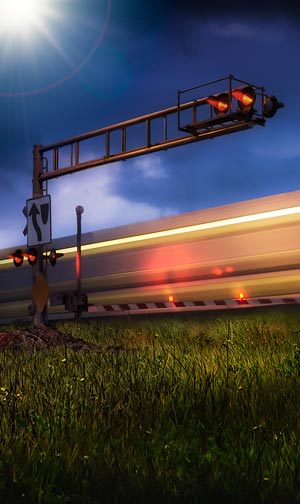Grandmother seeks Gates at Crossing Where Grandson and Girlfriend Died
(Farmland, Indiana – October 30, 2012)
Deb Kiser thinks adding gates to the protective systems currently in use at the Plum Street crossing of CSX railroad tracks might help prevent tragedies like the one that took the lives of both her grandson, Kris Kiser, and his girlfriend, Amber Morrow, early last Sunday morning.
Both 17-year-old seniors at Monroe Central High School, Kris was a standout football player while Amber was a popular cheerleader. The crossing where both died and a third student, Josh Ponder, was critically injured, when their car collided with a CSX freight train, is equipped with flashing lights and bells and has no gates.
But regardless of how she feels in not wanting someone else to go through the pain and heartache her family has experienced, Indiana railroad crossing safety authorities don’t necessarily agree with her.
“Two out of every three crashes occur at crossings that have arms or gates,” claims Indiana Dept. of Transportation railroad crossing safety official Will Wingfield.
Last year, the state of Indiana ranked second in railroad crossing accidents and sixth in fatalities among the 50 states according to Federal Railroad Administration statistics. Meanwhile, Indiana has 5,700 public railroad crossings of which 36% have full flashing lights, bells and gates protective systems, 21% have flashing lights and bells (as did the Plum Street/CSX crossing), and 43% have only passive signs.
State and federal funds available for crossing safety improvement are only sufficient enough to provide for “20 rail crossings with greatest need to be updated around the state each year,” adds Wingfield.
And even with that, INDOT is only responsible for public railroad crossings that intersect with state highways. Crossings like the CSX/Plum Street intersection in Farmland are the responsibility of the municipality that has authority for maintenance of the road in question, the INDOT official concluded.


